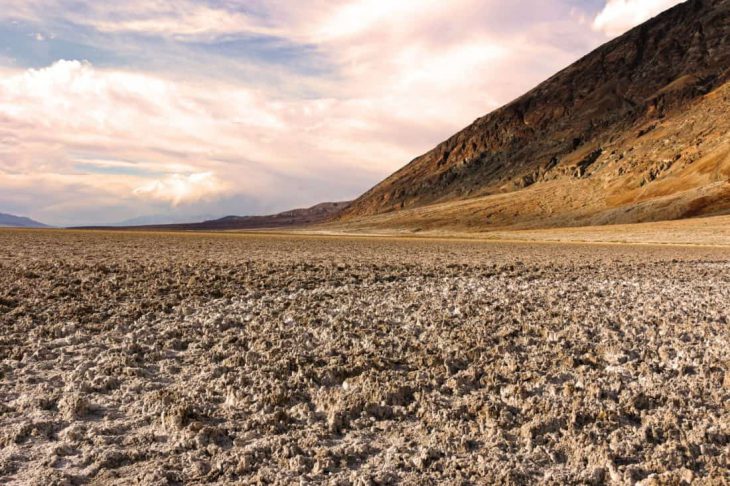Picture a cowboy in the great American southwest. He’s riding his horse across the vast deserts of southern Utah. The hot sun is beating down on him and the dry dirt is crunching under the horse’s hooves. The crunch actually comes from a crusty layer of microorganisms known as a “biocrust” covering the desert floor. The very same biocrusts he rode across are still here today.
Biocrusts are a thin layer of semi-solid dirt that covers the surface of many desert landscapes. They are complex microbial communities of mosses, lichens, bacteria, and algae and can be hundreds of years old. Biocrusts act much like our skin, protecting our soft insides from harsher damage. Biocrusts strengthen the soil and protect it from erosion caused by wind and rain. They also store water for plants to use in times of drought.
Unfortunately, biocrusts are susceptible to cowboys and cows alike. Vast areas of biocrusts can be damaged by cattle grazing, vehicles, and human activity. When biocrusts are broken up, the surrounding areas become vulnerable to erosion. These areas can take decades and even centuries to recover.
Scientists hoped to aid the slow formation of biocrusts using a new technique. The goal of their experiment was to encourage new biocrust formation, stabilize the soil, and help native plants to sprout. They transplanted healthy biocrusts to areas where the original biocrust was damaged. The biocrust transplant acts much like a skin transplant onto a burned area.
In addition to outdoor plots, some of the salvaged biocrusts were also placed on soil in a greenhouse to study the effects in a controlled environment. Both areas were treated with seed mixes to compare the impacts of biocrusts on plant establishment. The outdoor experiment received only native plant seeds. The greenhouse experiment received both native and non-native seeds
After one season, 46% fewer greenhouse plants growing in soil with added biocrust were wilted compared to those growing in regular soil and about 28% fewer seeds germinated in the biocrust soil. After the second season of growing, there were 27% fewer non-native plants growing in the soil with added biocrust. In greenhouse plots with no biocrust, there were 91% more plants. There were also 20% more native plant species growing in soil with biocrust than plots without.
After monitoring the outdoor experiment for one year, plots with added biocrusts showed more soil stability than those without. In the outdoor experiment, the number of plants and species growing were not affected.
These results surprised the researchers. The biocrust additions seemed to hinder plant growth. They hypothesized that the strength of biocrusts prevented seeds from breaking through the crust and establishing roots. Perhaps plants that were able to break through the crust would have the benefit of increased drought tolerance. The researchers also found that the biggest influence on plant establishment was soil texture, regardless of whether or not biocrusts were added. Plants consistently grew the best in outdoor sandy soils, and were not affected by the biocrusts. This suggests that the success of biocrust transplants is highly dependent on the environment, and further research is necessary.
In summary, the addition of biocrusts increased the ability for plants to survive under less water but decreased the number of species that were able to grow. The addition of biocrusts did, however, increase the soil stability across the board. These results suggest that the addition of biocrust is most useful for minimizing erosion and drought resistance in areas with high disturbance.
This study was the first of its kind to simultaneously compare outdoor and greenhouse experiments for biocrust inoculation. These findings are a crucial step to learning the secrets of the biocrust. This knowledge will help protect these incredible structures and preserve historic landscapes like the ones cowboys rode across over 150 years ago.


